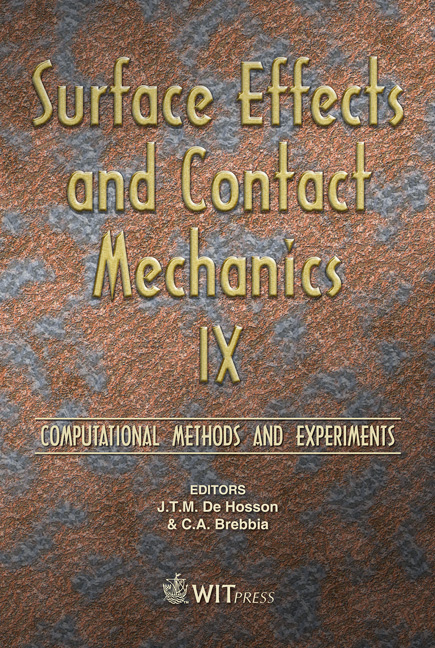Modification Of Rubber Surface With DLC Thin Films For Low Friction And Self Lubrication
Price
Free (open access)
Transaction
Volume
62
Pages
11
Page Range
73 - 83
Published
2009
Size
5,507 kb
Paper DOI
10.2495/SECM090071
Copyright
WIT Press
Author(s)
X. L. Bui, Y. T. Pei, E. D. G. Mulder & J. Th. M. De Hosson
Abstract
Thin films of hydrogenated diamond-like carbon (DLC) have been deposited on hydrogenated nitrile butadiene rubber (HNBR) via magnetron-enhanced plasma chemical vapor deposition (ME-PCVD). Pre-deposition plasma treatment of HNBR substrate is proven to be crucial for the improvement of film performance due to enhanced interfacial adhesion. Moreover, enhancement of concurrent ion impingement via magnetron sputtering of graphite in poisoning condition raises further the adhesion and hardness of the films. The columnar structure and the crack network developed during deposition enhance the flexibility of DLC thin films and exhibit strain tolerance up to 5%. After unloading from 50% strain stretch, thin DLC films of ~300nm thickness still adhere very well on the rubber substrates and no spallation or delamination is observed. The thin DLC film on 400V plasma treated HNBR rubber exhibits very low coefficient of friction of 0.175 under dry sliding against ø6mm steel ball (compared to >1 of uncoated HNBR rubber). After tribotests even at high normal load of 3N, almost no damage can be seen on the films. Such tribological property is even better than that of 1µm thick DLC or Me-DLC coated rubbers. Keywords: DLC film, rubber substrate, magnetron sputtering, flexibility, tribology.
Keywords
DLC film, rubber substrate, magnetron sputtering, flexibility, tribology





